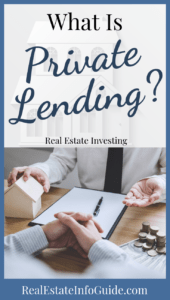If you are giving serious consideration to real estate investment, you should begin by pinning down exactly what you want to achieve. Are you looking for a way to make a large amount of money very quickly? If so, think again, because while real estate investment can be extremely lucrative, it should never be viewed as a quick ticket to riches. When it comes to investing in property, it is vital, before you part with a single dollar, that you pick the real estate investment niche that is right for you.
That is, of course, easier said than done. After all, if you’ve never invested in real estate, how do you know which niche or niches will give you the results you are looking for?
Well, you’ve come to the right place.
As a successful real estate investor myself, I understand, from personal experience, that you shouldn’t start out choosing a real estate investment niche. Instead, you should begin by envisioning the type of lifestyle you want to lead. Once you have this piece of the puzzle in place, you can start assessing the investment niches, which will best help you achieve that lifestyle.
How Do You Want Your Life To Look?
I have already touched on the “not a way to get rich quick” point, and it is important to reiterate here.
Money should not be your primary motivating factor.
Which sounds counter-intuitive right? If you’re investing, surely you want to make money?
Absolutely, it’s just that money should not be the driving force in your decision making. If you consistently put profit ahead of enjoying life, it doesn’t matter how much you make; you’ll never be happy.
Yes, you want to make money, but you also want to be happy while you do it.
So, with a balance between wealth and happiness in mind, ask yourself:
- Do you want a passive income? Many investors are surprised to discover that the “passive income” form of property investing still requires work on their part.
- Are you planning to “house flip”? If so, do you have the time and skills to do the work yourself, or will you have to pay someone to renovate for you? Do you have a large enough sum of money with which to buy a house, rehab, and pay for items such as permits, insurance, inspections, etc.? Are you aware of the tax rates payable on the profits from fix and flips?
- Do you want to be a hands-on property manager? If so, are you prepared to be available 24/7 to deal with tenant emergencies? Will you have the time and patience for advertising vacancies, screening tenants, or carrying out evictions if necessary?
- How about wholesaling or being a private lender? Do you have the professional network, the knowledge, and the experience to be sucessful?
Let’s take a look at the four real estate investment niches in which I have personal experience. I’ll walk you through the “what is it?” as well as the pros and cons of each niche. I’ll finish off each entry by laying out what kind of lifestyle you can expect with each niche and which type of investor it suits best.
The 4 Most Common Real Estate Investment Niches
Let me run you through four of the most common real estate investment niches, how they work, and their pros and cons.
The Buy And Hold Real Estate Investment Niche
Buy and hold real estate investing is the deceptively simple act of buying a rental property and holding onto it for the long-term. In this case, by long-term, I mean at least five years.
This is the most common form of real estate investing, probably because it is relatively accessible. You don’t need a large amount of start-up capital as you can purchase “buy and hold” properties with traditional mortgages. For example, with an FHA loan, you could get into real estate investing for as little as a 3.5% down payment. To do this, you must buy a two to four-unit property. You then have to live in one unit yourself. If that doesn’t appeal, you can still use other lenders for regular mortgages.
These are the five types of property commonly purchased by buy and hold investors:
- A Single Family Home. This can be what is known as a turnkey property. Tenants already occupy the rental, and you take over as the landlord, or it can be a property you purchase, renovate and then begin to rent out.
- Multi-Family Rentals. A property which has between two and four residential units, each of which has a separate tenancy agreement.
- Apartment Buildings. The same as a multi-family rental but with five or more units.
- Commercial Real Estate. Some new investors think that commercial real estate will be easier to manage than residential. Meanwhile, others shy away because they feel it will be much more difficult. In a way, they are both correct. For example, a simple office building with established tenants can be no more work than an apartment block. However, many commercial rentals need extensive legal knowledge to manage them correctly and are certainly not for the new investor.
- Vacation Rentals. With the rise of Airbnb, and to a lesser extent, VRBO, vacation rentals have become a less popular form of buy and hold. There was a time when you could do your research, buy a property in a vacation town, and be reasonably assured of making a profit. Now, while vacation rentals can still be profitable, short-term rental sites that allow homeowners to rent out their space. This makes vacation rentals as an investment, harder work, and less secure.
Is Buy And Hold The Easy option?
I describe “buy and hold” as deceptively simple because many new investors assume that they’ll buy a property that already has renters, then sit back and enjoy a profitable monthly rental income. If this is you, then I’m sorry to burst your bubble but, that’s not how it works.
Every “buy and hold” property requires some form of management. Just as you repair and maintain your own home, investment properties also need to be looked after. Also, you must consider the need for:
- Ad hoc repairs required as a result of unruly tenants, or simple accidents.
- Collecting rents and issuing receipts.
- Ensuring insurance, property taxes, etc. are up to date
- Carrying out, end of tenancy inspections.
- Bringing the property up to standard before new tenants can move it.
- Advertising for, showing around, interviewing, and screening new tenants.
- Knowing the legal rights and responsibilities for both tenant and landlord.
- Dealing with non-payment of rent, disruptive, or problem tenants.
- Ensuring the correct legal process is followed if an eviction should become necessary.
- Being able to drop everything and deal with fires, natural disasters, and any other event which could have a significant impact on your property or tenants.
- If your properties are not local, you’ll have traveling costs and time away from home and family.
Of course, you can hire a property management company to take care of the property for you, but even then you should prepare yourself for intermittent hands-on action.
 The Positives Of Buy And Hold Real Estate Investing
The Positives Of Buy And Hold Real Estate Investing
Assuming you have reliable, long-term tenants, a “buy and hold” property is an excellent investment for a regular monthly income. Once you pay all of your costs from the tenant’s rent payment, the money left over, for tax purposes, is income and will be taxed at your regular rate.
While the income you earn will be small at the beginning of your investment, your tenant is effectively paying the mortgage and as such is building equity for you. Not only that but your property should also be appreciating in value while you hold it. If you hold onto the property past the end of the term of your mortgage, your income will jump considerably. Meanwhile, if you find this is a successful real estate investment niche for you, you can leverage your equity and buy further properties.
The Negatives Of Buy And Hold Real Estate Investing
When you have good, longterm tenants and a problem-free property, “buy and hold” investing can run smoothly.
However.
Poorly chosen real estate, troublesome tenants, and periods when your property is empty can all place severe stresses on your time and finances. Many “buy and hold” investors set out believing it would be as simple as banking the rent each month. These investors then find themselves having to deal with their “passive income” investment property on an almost daily basis.
It is possible to mitigate some of these problems by hiring a property manager or management company. However, if you plan to go down that route, be absolutely sure you factor in all costs. Otherwise, a “buy and hold” investment can quickly drag you down financially.
What Buy And Hold Is Good For:
Buy and hold real estate investing is an excellent option for the majority of investors. As long as you do your homework, carefully assess your costs, and buy a suitable property, “buy and hold” investing is an excellent way for real estate newbies, and those with little capital, to begin their real estate investment journey.
The Fix And Flip Real Estate Investment Niche
Thanks to channels such as HGTV, “Fix and Flip” is the first investment niche many people think about when they are considering real estate investment. In an hour of TV, the star of the show will give the impression that it’s simple to:
- Find a home in need of renovation, in a decent neighborhood, which you can rehab quickly and sell for a profit.
- Buy the house without issues
- Start the work yourself, fitting it in on weekends, evenings and days off of work.
- Discover a problem, usually expensive, or time-consuming, or both.
- Find a workable, quick, inexpensive solution to the problem.
- Market the home, show it and sell immediately without a hitch
- Bank a deliciously juicy profit.
Yes, this can happen. In fact, in the US during 2017, 200,000 properties were bought and resold in the same 12 month period. While not all of these will have been “fix and flips,” it is reasonable to assume that the majority were.
However.
That same small screen popularity that has made “fix and flips” seem so easy is one of the very things that it is making it more difficult with each passing year. When few people were investing in real estate in this way, it was easier to find suitable properties. With an ever-increasing number of “fix and flip” dabblers, and sellers who are aware of the potential “fix and flip” intentions of buyers, these properties are becoming harder to find at a price point which will allow profits
What Is The “Right” Price For A Fix And Flip?
The biggest mistake new investors make in “fix and flip” investing is thinking like this:
“I can buy this property for $300,000. I’ll put $50,000 into it, sell for $400,000, and pocket $50,000”
I have seen plenty of people do something similar, believing that an affordable purchase price plus their “fix it” budget will set them on a path to riches. It won’t, and here’s why.
When buying a “fix and flip” property, you must consider not only the purchase price but also:
- The cost of the renovations that will bring the home up to the standard of other homes in the neighborhood. This is an important point. You can’t get away with slapping on a coat of fresh paint and laying down some cheap flooring and expect to get top dollar in an expensive neighborhood. The other side of that coin is that nobody wants to buy a million-dollar home in a street of $250,000 fixer-uppers. It is easy to overspend on high-end fixtures and fittings and then discover you have priced yourself out of the neighborhood.
- The “hidden” costs. When costing a “fix and flip,” some investors do not think to factor in items such as property taxes, buying and selling costs, utilities, permitting, inspections, insurance, and other peripherals. An extra week on the schedule can take you into an extra mortgage payment, and if your project stalls or doesn’t sell, you could find yourself holding onto the property way past the point where you can make a profit.
- A contingency fund. In TV land, a flipper will discover they have a structural problem, call up a friend who happens to be a structural engineer and have everything sorted before the next round of ads. In real life, unless you have a structural engineer to hand you could wait weeks for a visit, weeks again for a solution and it will cost a small fortune. For this reason, you need money available not only for unexpected fixes but also for the additional carrying costs they may induce.
The 70% “Rule”
A popular formula for calculating the price you should pay for a fix and flip is known as the 70% rule. It works like this:
- You start with the value of the home after repairs have been completed. Don’t forget to do this by looking at comparable properties in the neighborhood and not by deciding how much you believe it should be worth.
- Calculate 70% of that value.
- Subtract ALL of your projected costs, including carrying costs, etc.
- The amount you are left with is the maximum you should offer for the property.
So, for example:
- You find a property in a neighborhood where comparable properties in newly renovated condition are selling for $350,000
- 70% of $350,000 = $245,000
- Total costs = $82,000
- Renovations = $50,000
- Buying & selling costs = $20,000
- Carrying costs = $12,000
- $245,000 – $82,000 costs = The maximum you should pay for this property is $163,000.
Statistics show that 21% of fix and flip projects report a gross profit of less than 10%. In reality, it is highly probable that, if an independent audit of all costs was carried out on such projects, some of them actually ended up losing money.
This 21% does not include the 8% of fix and flips that were as sold for less than the property was purchased for – let alone factoring the costs.
 The Positives Of Fix And Flip Real Estate Investing
The Positives Of Fix And Flip Real Estate Investing
If you are careful enough to project accurate costs, “fix and flip” is an excellent option for short-term real estate investing. You can invest your capital, complete a project, and, in theory, be done and in profit in around six months. Therefore you not only flip yourself a property but you’ll also flip a quick profit.
In addition, fix and flips are a useful learning experience, even when they go wrong. Failure is not something to look upon negatively. Instead of lamenting the fact you lost money on your “fix and flip” look at it as an experience which will make you a better real estate investor.
While you are working on your “fix and flip,” you will also learn about:
- The costs of construction materials.
- How much you can expect to wait for and pay, a quality contractor or tradesperson.
- How the real estate industry, as a whole, works.
- Building a network of real estate professionals with whom you can work in the future.
There is also a great deal to be said for the personal satisfaction you feel when you have taken a run-down shell and turned it into a safe, secure, affordable, home.
The Negatives Of Fix And Flip Real Estate Investing
On the surface, a “fix and flip” investment looks like a fun, hands-on project but you can easily get sucked down a rabbit hole of ever-escalating costs – both financial and personal. This can, in turn, change the entire experience into a never-ending stress-fest.
A reno which you plan to carry out yourself may be timetabled to take six months of your spare time. Once you get into the thick of it, you may discover that every waking moment is consumed with your “fix and flip” and when you are not there physically your are there mentally.
In addition to the genuine chance of escalating costs, carrying costs, and unexpected problems can easily tip this from a profitable real estate investing niche into one in which you can lose money in many, many, ways.
Meanwhile, a “fix and flip” does not provide a reliable, steady income. You could see months pass between projects and in this case, having to stretch out your profits to cover living costs in the lean periods can reduce your investment plans to simple “stretching my money until I have some more” actions.
Just when you thought the financial problems might end, you can find that by improving the property you have pushed it up into a higher band of property tax.
Speaking of tax – the IRS love “fix and flip” projects because the profits are frequently subject to capital gains tax of between 20% and 40%.
Fix And Flip Real Estate Investing Is Good For:
Those who are willing to learn, or have enough knowledge, to make well-researched financial decisions, informed by their heads and not their hearts. If you have at least a basic understanding of construction, project management, and the real estate industry – even better!
If not, and you decide to take on a “fix and flip” be prepared to fail and learn from the experience.
The Wholesaling Real Estate Investment Niche
The name for this kind of real estate investing can be confusing for new investors. Most of us understand wholesaling in the retail sense where you buy a large number of items at once and then sell them individually, making a profit on each one.
Real estate wholesaling is entirely different.
In real estate wholesaling the wholesaler approaches a homeowner, usually, one who has a distressed property which they feel would be very difficult to sell on the open market. Together the homeowner and the wholesaler will agree to a price and the homeowner “contracts” the property to the wholesaler and agrees on a closing date for the sale.
Now the wholesaler finds a buyer for the property who is willing to pay a price, which is higher than the one agreed between the wholesaler and the property owner.
The buyer makes the purchase from the wholesaler who pays the original homeowner the amount agreed under contract and keeps the difference.
So, for example:
- A homeowner has a rundown property they feel is too distressed to sell.
- The wholesaler negotiates with the homeowner.
- The pair agree to put the home “Under Contract” to the wholesaler for $250,000 with a closing date of March 1st.
- Now the wholesaler looks for a buyer for the home who is willing to pay more than $250,000 and close the sale before the agreed March 1st date.
- A buyer is found who is willing to pay $275,000, and the wholesaler assigns the contract to this buyer.
- The buyer pays the wholesaler $275,000, and the wholesaler pays the homeowner the $250,000 they agreed at the beginning.
- The wholesaler keeps the $25,000 difference, without ever buying or selling the property.
To many people, this can sound like a scam, but it is not. It is a perfectly legal, universally recognized real estate investment strategy. Having said that, it’s essential to understand the risks of wholesaling and how to mitigate those risks.
The Positives Of The Wholesaling Real Estate Investment Niche
By far the most significant positive of wholesaling is that you do not actually buy or sell a property. You do not have any purchase, renovation, carrying, buying, or selling costs to eat into the return on your investment, and, from the time you are “under contract” you can see your profit in a matter of a few weeks.
Wholesaling is also relatively easy to get into, especially so because you do not need to have some capital to invest in the first place. There is no requirement to find a lender or apply for a mortgage, and it is an excellent way of learning about real estate in general while you build up some capital for one of the other investment niches.
The Negatives Of The Wholesaling Real Estate Investment Niche
If you do not have a network of real estate professionals, you will have to begin building one as soon as possible. With sucessful wholesaling speed is of the essence, and if you do not have suitable prospective buyers, you won’t have time to begin looking for them after you have agreed to a contract with a homeowner.
Which brings me to the next point. Always ensure you have a contingency clause in the contract which prevents you from having to purchase the property if you cannot find a buyer to whom you can assign the contract. Too many new investors have been unaware of this point and found themselves legally obliged to buy a home when the closing date has rolled around.
Finally, much like “fix and flip,” you do not have a regular, reliable income with wholesaling.
The Wholesaling Real Estate Investment Niche Is Good For:
New real estate investors who do not have any capital with which to begin any other investing. It is also especially suitable for those who wish to build their knowledge, and a real estate network, before moving onto some of the other real estate investment niches.
 The Private Lending Real Estate Investment Niche
The Private Lending Real Estate Investment Niche
The concept of becoming a private lender can be a strange one for the newbie real estate investor. There is a definite leap of mindset when you move from using your own, or other peoples money to invest in your projects to providing the money for other peoples projects.
So, can just anyone become a private lender?
In theory, yes. As long as you have enough money to lend to someone else, you can become a private lender.
However.
To become a sucessful private lender is something else entirely different.
What Does A Private Lender Do?
A private lender is an individual who uses their own capital to provide loans to other real estate investors. These loans are secured against real estate in the same way that traditional mortgages are. The private lending sector is booming because private lenders are not bound by the same laws and regulations as the banks. As a result, each lender has autonomy over who they choose to extend a loan to, and the terms they offer for that loan.
However.
While private lending is not as heavily regulated as the traditional banking system, there are federal and state laws and regulations with which you must comply. For example, in New York state, once you have granted more than five loans, in total, you are required to become a licensed lender. Therefore it is crucial to stay onto of the changing legislative landscape.
Who Borrows From A Private Lender?
The traditional sources for real estate loans – banks, government agencies, etc. – have strict criteria over who can borrow, how much can be extended, and repayment terms. Besides, these loans take time to process.
Private lenders do not have these restrictions and can extend a loan to anyone they choose, in a much shorter timeframe. This makes them an attractive resource for real estate investors in a hurry or those who may not qualify for a loan from a more traditional source. For example:
- Fix and flippers who do not have enough capital for a project themselves.
- Buy and hold investors or those with more substantial projects who do not have access to traditional financing.
- Real estate investors who require a short-term loan, similar to a bridging loan.
- Those who wish to buy and rehab a property, and then refinance with a traditional mortgage from a bank.
What Do You Need To Become A Private Lender?
The number one, most obvious requirement is that you have sufficient capital with which to extend loans. Or have OPM available to you. You must also be aware that this capital may be tied up for some time, depending on the terms of the loan you make, so if quick and easy access to your investment capital is important to you, private lending is not the way to go.
Next, you need, at the very least, an excellent working knowledge of the real estate industry in general and, in particular, the local market in which you will be lending. Without this, you will not be able to evaluate the risks of a project adequately and, subsequently, it’s potential for success.
If you do not have these two things, then becoming a private lender real estate investor is not a good fit for you.
In addition to the basic principles of having the money to lend, and understanding the potential for the success of a project, is knowing how to assess a borrowers ability to repay the loan. Yes, you will be securing the loan against the property in question, but the whole idea of being a private lender is to make a profit without having to deal with the nuts and bolts of a project. If you take control of a project because a borrower defaults on their loan, you then have the hassle of dealing with or reselling the project, usually at a high risk of financial loss.
The Positives Of The Private Lending Real Estate Investment Niche
By far the most significant positive of being a private lender is that you can put your money to work in real estate, without having to deal with the day-to-day management of a project. Yes, you still have to service the loan, but you won’t be dealing with contractors, suppliers, or awkward tenants. That pleasure will all be down to your borrower.
Also, as long as things go well, private lending can provide a steady, reliable income stream which can be reinvested to build your wealth futher still.
The Negatives Of The Private Lending Real Estate Investment Niche
First of all, to become a private lender, you need to have enough money to lend others AND not require access to it. The lack of liquidity is a major setback for some potential private lenders.
Secondly, you must have enough capital to make loans and allow yourself a very comfortable cushion for unexpected expenses. For example, in the case of a borrower who becomes delinquent in their payment, you may have to pay for legal representation in order to reclaim your money.
Which brings me to the third negative. If a borrower cannot or will not make the appropriate repayments, you may have a legal fight on your hands to recover your money or take ownership of the real estate in question. Then, if you take ownership, you have the project to deal with or resell.
The Private Lending Real Estate Investment Niche Is Good For:
Those investors who have been sucessful in their own real estate projects and have sufficient capital to begin extending loans to others. Either that or investors who have the money to offer as loans and have access to professional advice about the real estate industry and local market.
In Conclusion
There is a real estate investment niche for almost every type of investor. You can choose the best niche for you by identifying the lifestyle you want to live and working backward. For example, a hands-on lifestyle works well for “fix and flip” or if you would prefer a more-hands off opportunity a “buy and hold” with a property manager could be the way to go.
Remember. Real estate investment is not only an opportunity to build wealth, but it is also an opportunity to build knowledge, experience, and skills which are transferable to other areas of life. That is why failure is not an option, it’s a certainty, and when it happens, embrace it, learn from it, and move forward to build an even better real estate investment empire.
About The Author
 Geoff Southworth is the creator of RealEstateInfoGuide.com, the site that helps new homeowners, investors, and homeowners-to-be successfully navigate the complex world of property ownership. Geoff is a real estate investor of 8 years has had experience as a manager of a debt-free, private real estate equity fund, as well as a Registered Nurse in Emergency Trauma and Cardiac Cath Lab Care. As a result, he has developed a unique “people first, business second” approach to real estate.
Geoff Southworth is the creator of RealEstateInfoGuide.com, the site that helps new homeowners, investors, and homeowners-to-be successfully navigate the complex world of property ownership. Geoff is a real estate investor of 8 years has had experience as a manager of a debt-free, private real estate equity fund, as well as a Registered Nurse in Emergency Trauma and Cardiac Cath Lab Care. As a result, he has developed a unique “people first, business second” approach to real estate.
Check out the Full Author Biography here.


